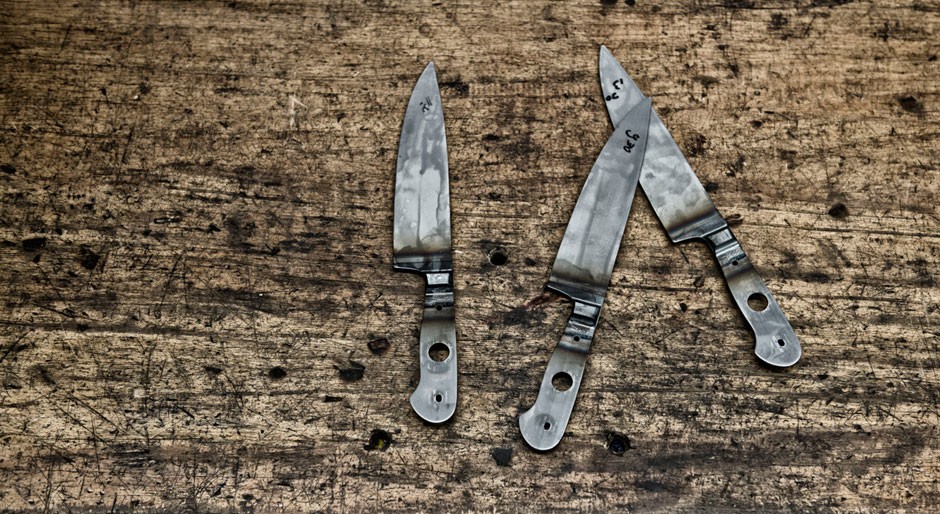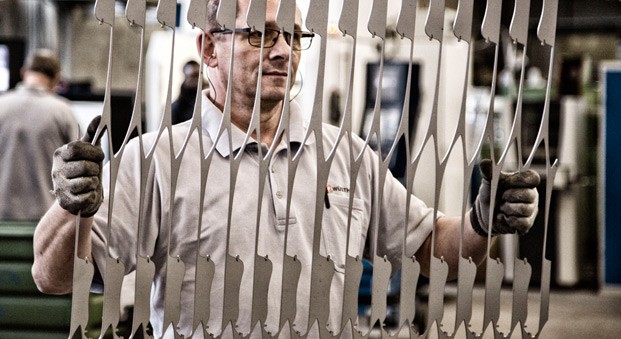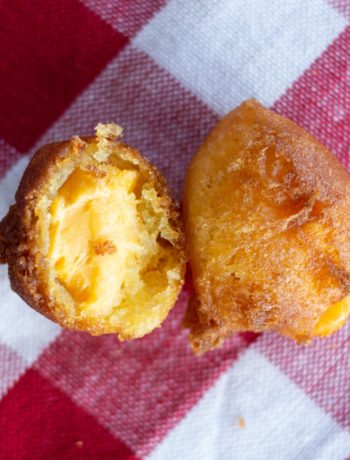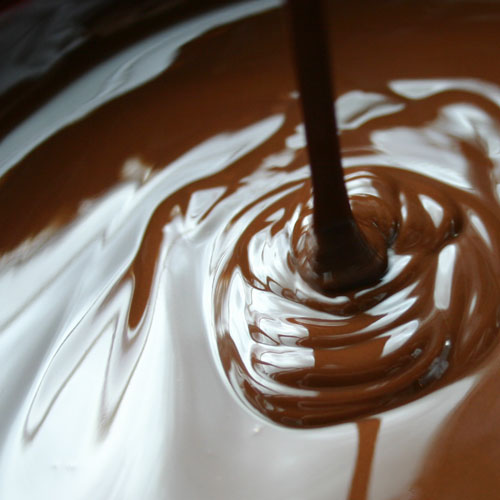We started out our knife series with the anatomy of a knife. Learning the terminology for each element of a knife is just the beginning in helping you determine which knife is right for you.
The other determining factor is how you plan to use your knife on a regular basis. Are you cutting a lot of fruits and soft vegetables? Is a spatchcocked chicken on your menu for this week? Do you cut through a lot of root vegetables, squash and watermelon?
The edge on your knife is what will make the biggest difference in your cutting success. Maintaining that sharp edge will have more of an impact on your efficiency when cutting than what the knife actually looks like. The way a knife is made and the material it is made with will determine how the edge can best stay sharp.
Most knives on the market fall into one of the following categories: Forged, Stamped and Ceramic

FORGED KNIVES
Forged knives begin with a single piece of high carbon steel. It is then heated in a furnace, until it is red hot. It is precision forged, shaped and tempered. The knife is then finely polished. They add the handles and rivets. The knife is then finished when it is sharpened, etched with the logo (and often the country of origin) and the whole knife polished. Most manufacturers then put the knife through multiple rounds of observation and quality control. When purchasing from a well-known knife brand, you can guarantee you’re getting their very best product.
Forged knives are built with a full length tang, which adds weight to the knife. Some users love the added weight of a forged knife. They also commonly have a bolster, which helps with heft and balance as well.
It is believed that the pounding/hammering helps to re-arrange the molecules in a forged knife, making it harder and stronger. Therefore, a forged knife tends to keep its edge for a longer time but they do take more effort for sharpening and restoring their edge.
Watch this video of a Wusthof knife production from start to finish.
STAMPED KNIVES

Stamped knives are cut out form a large sheet of steel. Think of a cookie dough being cut with a cookie cutter. After the knife is cut out, it is then tempered, hardened and finished. Stamped knives are sometimes made with a solid tang, but they also can be made with a seam between the handle and blade, creating a weak spot after repeated use.
A stamped knife with high-quality steel, and a full tang can certainly maintain a sharp edge and quality feel, but a poorly made stamped knife can cause a whole series of issues with trying to sharpen and use can be limited by the low-quality steel creating a dull edge. However, the finer edge is easier to sharpen and restore when dull.
CERAMIC KNIVES

Ceramic knives are made through process of dry-pressing and firing powdered zirconia using solid-state sintering. Like diamonds and sapphires, the elements of ceramic are formed in nature through thousands of years of crystallization, extreme temperatures, and literally tons of pressure. The result is a pure, dense, unrelenting material that is 50% harder than steel, close to diamond in hardness.
Due to the nature of ceramic, there are some limitations when using a ceramic blade. They are great to complement your collection of steel knives as they excel when cutting through fruits, soft vegetables and boneless meats. They should never be used on meat with a bone, for prying, cutting frozen foods or for slicing cheese.
| FORGED | STAMPED | CERAMIC |
| More Expensive | Less Expensive | Less Expensive |
| Heavier | Lighter | Lightest |
| Usually have bolster | Often No Bolster | No Bolster |
| Thickest Blade | Thin Blade | Thinest Blade |
| Less Flexible | More Flexible | No Flexibility |
| More Durable | Prone to bending | More brittle |
| Hand-wash only | Hand-wash only | Hand-wash only |
So which knife should you buy? We like to say that a knife should always be held by the user before purchasing. Come join us at our Knife Block Party, April 27th. You can “test drive” a number of Wusthof knives to see which one feels the best for you.
If you are looking for a high quality knife that will last you years, you can’t go wrong with a nice forged knife. We stand behind our Wusthof knives, they are a classic style and their lifetime guarantee will ensure that you’ll never need to buy another knife ever again. The unparalleled Shun knives are a great option if you prefer an Asian-style blade.
If you like the lighter-weight feel of the stamped knives, you can certainly find a high-quality style with Wusthof’s Pro line or with a Victorinox steel knife. Many users love the ease of use, and less fatigue with a lighter weight knife.
A ceramic knife is a champion at light-weight slicing and our Kyocera knives are top of the line. They’ll easily convert you to the effortless slicing that a high quality ceramic knife can offer.
Which kind of knives do you already have at home? Are you pleased with the weight and their ability to maintain a sharp edge? Share with us in the comments or on our Instagram page. We’re slicing up some fun over there every day!
Stay tuned for the next post in our Knife Know How series.




Travis Johnson
February 23, 2021 at 9:06 pmYou should consult a custom knifemaker when it comes to articles related to knives. There are several things in this article that bothers me and misinformation is quite difficult to reinform properly.